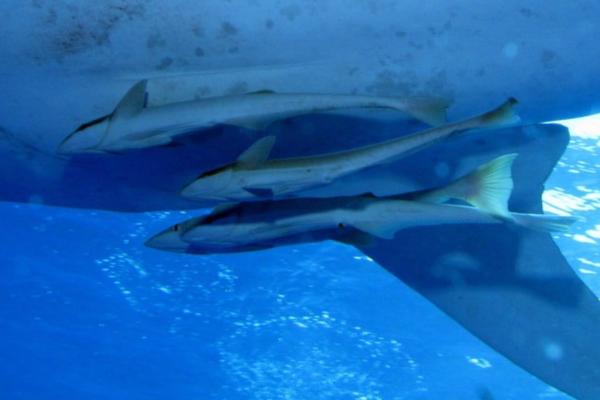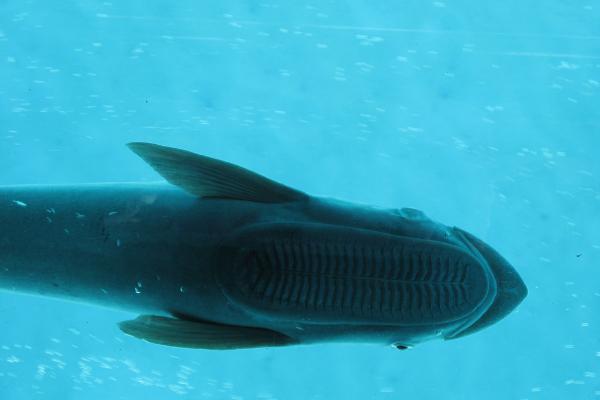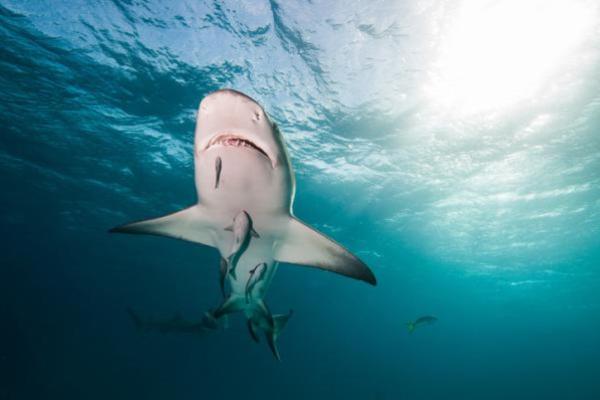Among the many fascinating fish that inhabit our oceans, few are as unique as the remora (Remora remora), also known as the suckerfish. These marine hitchhikers have evolved a remarkable ability: they attach themselves to much larger ocean creatures and travel the seas with minimal effort.
In this article, we’ll explore the physical characteristics, habitat, diet, reproduction, and the mutualistic relationship remoras share with sharks. Let’s dive into the world of these extraordinary fish.

Remoras belong to the family Echeneidae. What makes them stand out is a specialized suction disc located on the top of their heads. This disc is actually a modified dorsal fin that forms a flattened, oval-shaped structure used to attach to hosts such as sharks, turtles, whales, rays, dugongs, and even boats.
Suction disc: Formed from the first dorsal fin, containing 10 to 28 transverse laminae (plates) that create suction when expanded and contracted.
Elongated, slender body: Built for minimal drag while attached to a host.
Lack of swim bladder: Unlike most fish, remoras do not have a swim bladder, which helps them stay close to their host.
Flattened, wide head: Provides a solid surface for attachment.
Brush-like teeth and wide jaws: Help filter and grasp food particles.
Color variation: Remoras don’t have a fixed coloration, and individuals of the same species may vary in appearance.
Used in traditional fishing: In some cultures, remoras have been used to catch turtles by attaching them to a line and letting them cling to the prey.
Remoras are typically found in warm temperate and tropical waters of the Pacific and Atlantic Oceans. They prefer shallow coastal areas, especially those with coral reefs, and are commonly found in depths ranging from 1 to 100 meters.
Hosts they commonly attach to include:
Sharks
Whales
Sea turtles
Rays
Dugongs
Boats or floating debris
Remoras are opportunistic feeders and consume a wide range of food sources:
Plankton
Small crustaceans
Dead fish or organic debris
Parasitic copepods from host animals
Leftover food dropped by the host
Some remoras use a filter-feeding strategy, where they open their mouths and let water pass through their brush-like teeth to trap plankton.

Remoras reproduce via external fertilization, meaning both males and females release their gametes (sperm and eggs) into the water where fertilization occurs.
Fertilized eggs float in the water column.
Embryonic development occurs within the egg, which provides the necessary nutrients.
Larval remoras hatch with underdeveloped features.
Some juveniles may enter the gills of other fish as temporary parasites.
Upon maturity, they develop the distinctive suction disc and become fully functional adults.

One of the most famous examples of marine symbiosis is the relationship between remoras and sharks.
Food access: They feed on leftovers or ectoparasites from the shark’s body.
Free transportation: They conserve energy by hitching rides.
Protection: Being attached to an apex predator like a shark helps them avoid other predators.
Mutualism: If the remora removes harmful parasites or dead skin from the shark, both parties benefit.
Commensalism: If only the remora gains (e.g., food and transport), while the shark is neither helped nor harmed.
This relationship is often described as symbiotic, and scientists continue to study its subtle variations across species.

Remoras demonstrate the power of evolutionary specialization. From their unique suction disc to their versatile diet and efficient transport strategy, they offer a fascinating glimpse into the complexity of marine ecosystems.
Understanding their behavior and ecological role helps us appreciate not just these small fish—but the intricate balance of ocean life.
Bibliography
Prandi, M. (2015). Echeneidae, its distribution and new records for oceanic waters of Uruguay and adjacent areas. Available at: https://www.colibri.udelar.edu.uy/jspui/bitstream/20.500.12008/8453/1/uy24-17534.pdf
McEachran, J. D., & Fechhelm, J. D. (2021). Echeneidae. In Fishes of the Gulf of Mexico, Volume 2 (pp. 253–262). University of Texas Press.
animal tags: Remoras
We created this article in conjunction with AI technology, then made sure it was fact-checked and edited by a Animals Top editor.